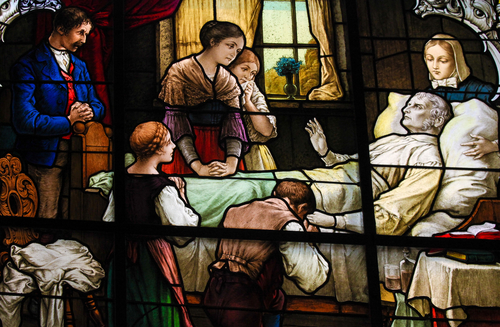
For-Profits Most Likely to Give Chemotherapy Near End of Life
Chemotherapy, while effective for many cancer patients, is a miserable experience. The side effects of the treatment range from short term nausea and vomiting to lingering symptoms such as extreme sensitivity to cold and whole body aching. Chemotherapy saves many lives, but it does not work for everyone. At some point, cancer patients whose treatments are not affecting their cancer need to consider transitioning to palliative care and hospice. Yet despite the breadth of research about the benefits of palliative care and hospice, many cancer patients never transition to this type of care. A new study had shown that many patients receive chemotherapy near the end of life, especially if they are younger or in a for-profit facility.
Chemotherapy near the end of life impacts care outcomes
Hospice and palliative care improve patient outcomes and satisfaction in care. For those patients who receive chemotherapy near the end of life, the likelihood of dying in an acute care facility, such as a clinic or hospital, rises. They are also less likely to enter hospice. We know from past research that patients prefer to die at home, and that comfort and control are top priorities for patients. These are end of life considerations that can only be given by hospices. For some facing terminal illness, in particular cancer, the option for palliative care and hospice is not given, or not given soon enough.
Young Patients More Likely to Receive Chemotherapy at End of Life
The study found that among all groups, young cancer patients were the most likely to receive chemotherapy at the end of life. They were also more likely to die in acute care facilities. Part of this trend may stem from the idea that young patients may have a better chance at curative care than older patients. Physicians may hope that they can still save their young patient. The trend could also stem from the idea that young people may be less likely to give up in the fight, since they should have much more life to live. Whatever the root cause, the study brought to light a trend that needs to be addressed and studied further.
Patients In For-Profit Institutions More Likely to Receive Chemotherapy at End of Life
The study also found a troubling trend in the differing rates of hospice admission between for-profit and non-profit organizations. Cancer patients in for-profit medical facilities were far more likely to receive chemotherapy at the end of life compared with non-profit facilities. Considering one of the greatest criticisms of aggressive therapies at the end of life is unnecessary cost-burden on patients and their families, the study’s findings raise ethical questions in the practices of for-profit healthcare institutions.
Many Patients Still Lack Access to Palliative Care
A key finding in the study is that healthcare organizations in many parts of the country still do not offer palliative care services. In these facilities, patients at the end of life are far more likely to receive chemotherapy than in facilities where palliative care is offered. This finding underscores the need to continue to advocate for and educate the healthcare community and the public on the benefits of palliative care and hospice.






